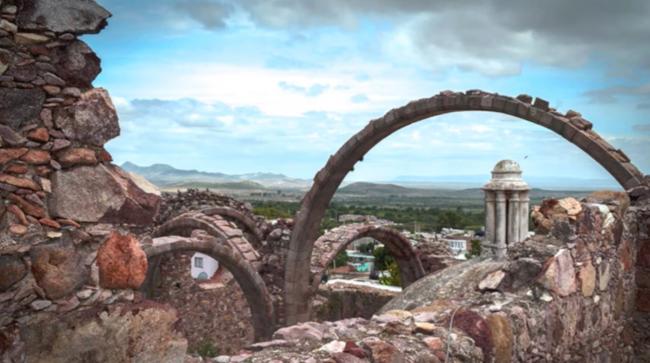Pueblo de Pinos
Route element
Pueblo de Pinos
Between the 16th and 17th centuries, the Real de Minas de Nuestra Señora de la Concepción de Pinos was a mandatory stop for all those traveling from the mines of Zacatecas to the Consulado de la Nueva España in what is now Mexico City, as well as for those traveling to the towns of San Felipe and San Miguel El Grande.
According to the Franciscan chronicler Antonio Tello, the Real de Minas de Pinos was founded in 1581. The first Europeans to visit the area were prospectors and religious figures who began exploring it in the mid-16th century. From the beginning, the area was claimed by both Nueva Galicia and Nueva España. By 1621, the mines were prosperous, with most of the metals being extracted from the Sierra de Pinos and from Peñón Blanco; the latter being a significant geographical feature and granite formation visible from a great distance. This mining boom led the Real de Minas de Pinos to consolidate and become the parish head, surpassing other settlements. Among the colonial buildings in Pinos, the parish church of San Matías stands out, built between 1682 and 1697. In 1795, the temple began to be expanded to three naves, although this work remained incomplete. On one of the side walls are represented a double-headed eagle, a crowned lion, and a bishop, symbols of the Hispanic dual monarchy. The interior features a single nave with ribbed vaults, a transept, and an octagonal drum dome. The church preserves some notable paintings, including a Trinity signed by Miguel Cabrera.
Facing the plaza, one can see a portal where merchants used to set up. On one of its sides are the remains of the Temple of the Holy Cross, whose brotherhood was responsible for conducting the burials of the inhabitants of the Real.
As for the Convent of San Francisco, it is known to have been founded in 1591. The current temple is constructed of stone, with an unadorned facade featuring a lowered window and several niches, as well as a single-body tower. The interior has a barrel vault with ribbed arches. The main altarpiece is an estípite style with a high body and a finial, and it houses an image of the Black Christ of Esquipulas, patron of the Royal Inland Road. On the side walls, two 17th-century Salomonic altarpieces are preserved.
Another significant colonial building in Pinos is the Church of the Immaculate Conception of Tlaxcala, which dates from the second half of the 18th century. This building has a austere facade featuring a large octagonal coral window and three niches. The church has two towers, each with two bodies. The interior is covered by a barrel vault and retains an altarpiece dedicated to the Immaculate Conception.



